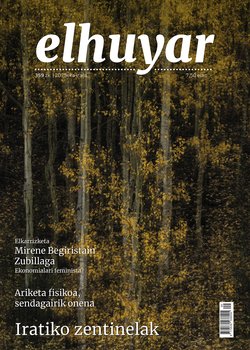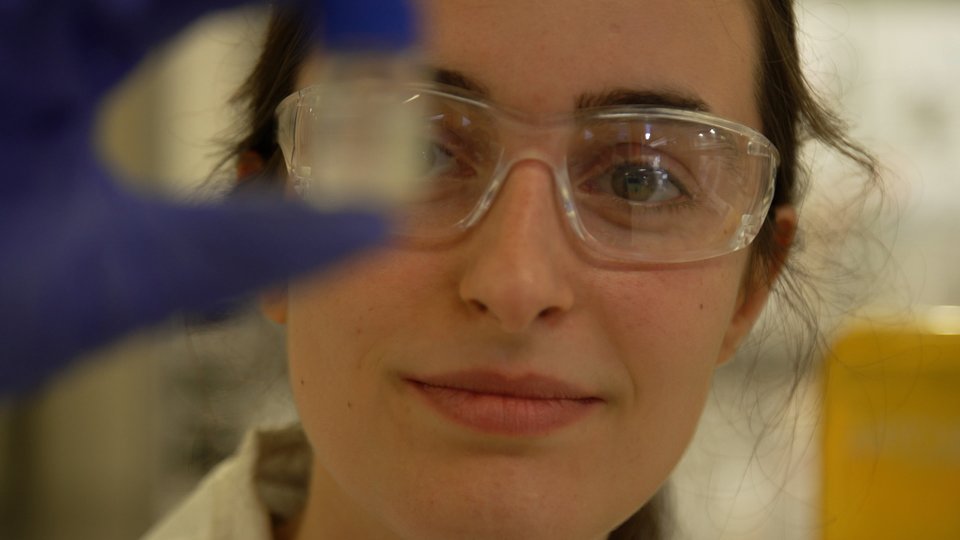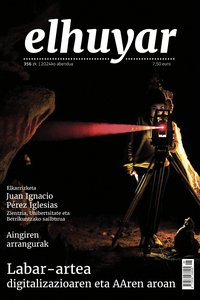Trainer with Mikel Orbañanos
Mikel Orbañanos is the coach of the Rowing and Hondarribia Rowing Association.
NAGORE REMENTERIA; Elhuyar Foundation: Well done, Michael!
MIKEL ORBAÑANOS; Hondarribia Remo Association:Hello there, Nagore!
NAGORE REMENTERIA; Elhuyar Foundation:How's it going?
MIKEL ORBAÑANOS; Hondarribia Remo Association: All right, let's go.
NAGORE REMENTERIA; Elhuyar Foundation: As a trainer in Hondarribia, it’s up to you to put the paddlers you have on the trainer. Which do you prefer: technique or strength?
MIKEL ORBAÑANOS; Hondarribia Remo Association: Both are important. The truth is that the technique is necessary in rowing and it is also good to have strength. It's hard for a technical t-shirt to gain strength. He's got the strength that the rower has. It is easier for a strong t-shirt to work the technique and make a good t-shirt than it is for a non-strong t-shirt to make a good t-shirt.
NAGORE REMENTERIA; Elhuyar Foundation: So it takes strength at the base to be a good rower.
MIKEL ORBAÑANOS; Hondarribia Remo Association: Yes, to be a good rower, you definitely need strength. But there are people who also get along well with the technique and, although they have a little less strength, they defend themselves by rowing.
NAGORE REMENTERIA; Elhuyar Foundation: When we say technique, what do we mean by rowing? What is a good technique?
MIKEL ORBAÑANOS; Hondarribia Remo Association: Every coach has their own perspective. But in general, at least, a rower who makes good use of his strength to do well in rowing, who goes with the others, and who does as little damage to the boat as possible.
NAGORE REMENTERIA; Elhuyar Foundation: For example, when the sea is bad, is it better to have good technique or strength? On the contrary, is technique or strength better?
MIKEL ORBAÑANOS; Hondarribia Remo Association: When the sea is bad, the crew with the technique will usually perform better. And in the area, or when it's calm, the crew with the force will usually work better.
NAGORE REMENTERIA; Elhuyar Foundation: What is the front of the trainer? What background?
MIKEL ORBAÑANOS; Hondarribia Remo Association: The front is the end of the trainer that enters the destination first. People get confused when they say, "Mikel, you're leaving behind! ".
NAGORE REMENTERIA; Elhuyar Foundation:You're the striker, the bringer.
MIKEL ORBAÑANOS; Hondarribia Remo Association: The striker, yes. That's because I go in front. People get confused because we go backwards. On the front would go technical people and, inside the crew, who are more agile. And also technical and agile people in the back. The pattern would go in the back. And in the middle we'd say heavier and stronger people.
NAGORE REMENTERIA; Elhuyar Foundation:Do I think these two coxes will be for the skipper to help him in his maneuvers?
MIKEL ORBAÑANOS; Hondarribia Remo Association: Yeah, that's it. The pattern goes down there at regattas in the river or regattas in the calm water. And in the sea, or when it comes to big waves, you have the opportunity to climb your legs up to better carry the trainer.
NAGORE REMENTERIA; Elhuyar Foundation:How many eggs do you take?
MIKEL ORBAÑANOS; Hondarribia Remo Association:Thirteen paddles (one paddle for each paddle), one replacement paddle, and the striker carries another paddle in the cyabogs to help the pattern.
NAGORE REMENTERIA; Elhuyar Foundation:A little rowing, right?
MIKEL ORBAÑANOS; Hondarribia Remo Association:A little rowing, yes.
NAGORE REMENTERIA; Elhuyar Foundation: And the pattern is bigger.
MIKEL ORBAÑANOS; Hondarribia Remo Association: Bigger, yeah. The pattern is 4-4.5 meters long. That's good weather for everything and in the region. And with the bad sea of 5 meters... it's longer to make the lever better.
NAGORE REMENTERIA; Elhuyar Foundation: I remember when you started using carbon fiber trainers you were still using wooden oars. Did it cost to make the transition?
MIKEL ORBAÑANOS; Hondarribia Remo Association: It cost, yes. But there's a big difference in weight between the two.
NAGORE REMENTERIA; Elhuyar Foundation:What difference does it make?
MIKEL ORBAÑANOS; Hondarribia Remo Association:A light wooden paddle weighs 3.5-4 kilos and a fiber paddle weighs 2-2.5 kilos.
NAGORE REMENTERIA; Elhuyar Foundation: It's a big difference, isn't it?
MIKEL ORBAÑANOS; Hondarribia Remo Association: It’s a big difference, yes, especially because it’s a moving weight. This is even worse for the trainer.
NAGORE REMENTERIA; Elhuyar Foundation:It will cause opposite inertias.
MIKEL ORBAÑANOS; Hondarribia Remo Association:I think the biggest breakthrough of the last few years has been in the rowing.
NAGORE REMENTERIA; Elhuyar Foundation:Anyway, the pattern sometimes wears wood, right?
MIKEL ORBAÑANOS; Hondarribia Remo Association: Yes, because for the most part it is more satisfied with the wooden paddle, because it is harder and it is a little heavier that gives it security to handle better with the bad sea.
NAGORE REMENTERIA; Elhuyar Foundation: Thank you very much! And we wish you very good luck this season.
MIKEL ORBAÑANOS; Hondarribia Remo Association: To you guys. Let's see if it is.
Buletina
Bidali zure helbide elektronikoa eta jaso asteroko buletina zure sarrera-ontzian










